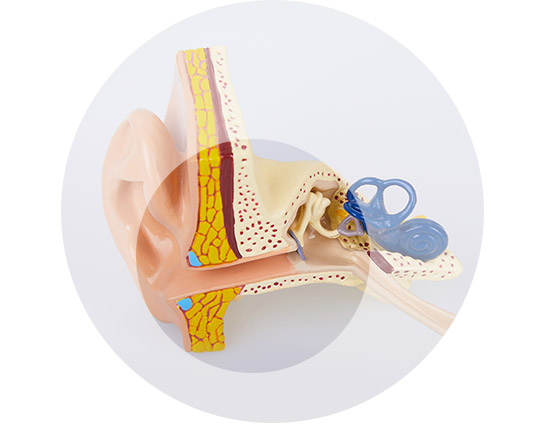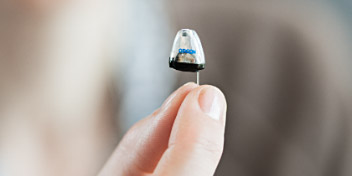Find out more about Oticon Zeal here:
Conductive hearing loss

What is conductive hearing loss?
Conductive hearing loss occurs in the outer or middle part of the ear. This is where sound is converted to vibrations and sent to the inner ear.
The name 'conductive' hearing loss refers to the problems related to the transfer of sound waves (due to a blockage or other impediment in your ear).
Too much ear wax, a ruptured eardrum, or even ear infections can all cause conductive hearing loss.


Book a free test for conductive hearing loss
What causes conductive hearing loss?
Conductive hearing loss is often easy to identify, and can be caused by the following:
- Ear wax build-up
- Fluid in the ear
- Ear infections
- Eardrum damage
- Trauma
- Diseases such as osteoporosis
What is the difference between conductive and sensorineural hearing loss?
Hearing loss is divided into the following categories (based on which part of the ear is damaged): sensorineural, conductive, and mixed hearing loss.
Conductive hearing loss is usually the result of a disruption to the sound's path as it travels from the outer/middle ear to the inner ear. Sensorineural hearing loss, on the other hand, happens when the delicate nerve fibres of the inner ear become damaged.
Mixed hearing loss occurs when both sensorineural and conductive hearing loss occur in the same ear.
3 signs of conductive hearing loss
Conductive hearing loss is sometimes accompanied by pain or discomfort – or the feeling that "something is wrong" in the ear. Other common signs of conductive hearing loss may include:

Treatment for conductive hearing loss
Time may be all that is needed to recover from less severe cases of conductive hearing loss. In other cases, it can be treated medically in one of these ways:
- Antibiotics and anti-fungal medications can treat hearing loss caused by an ear infection
- Surgery may be recommended to repair damage to the eardrum or middle ear, if present
- Hearing aids may also be an option if other forms of treatment haven't been successful enough
- Bone anchored hearing systems







